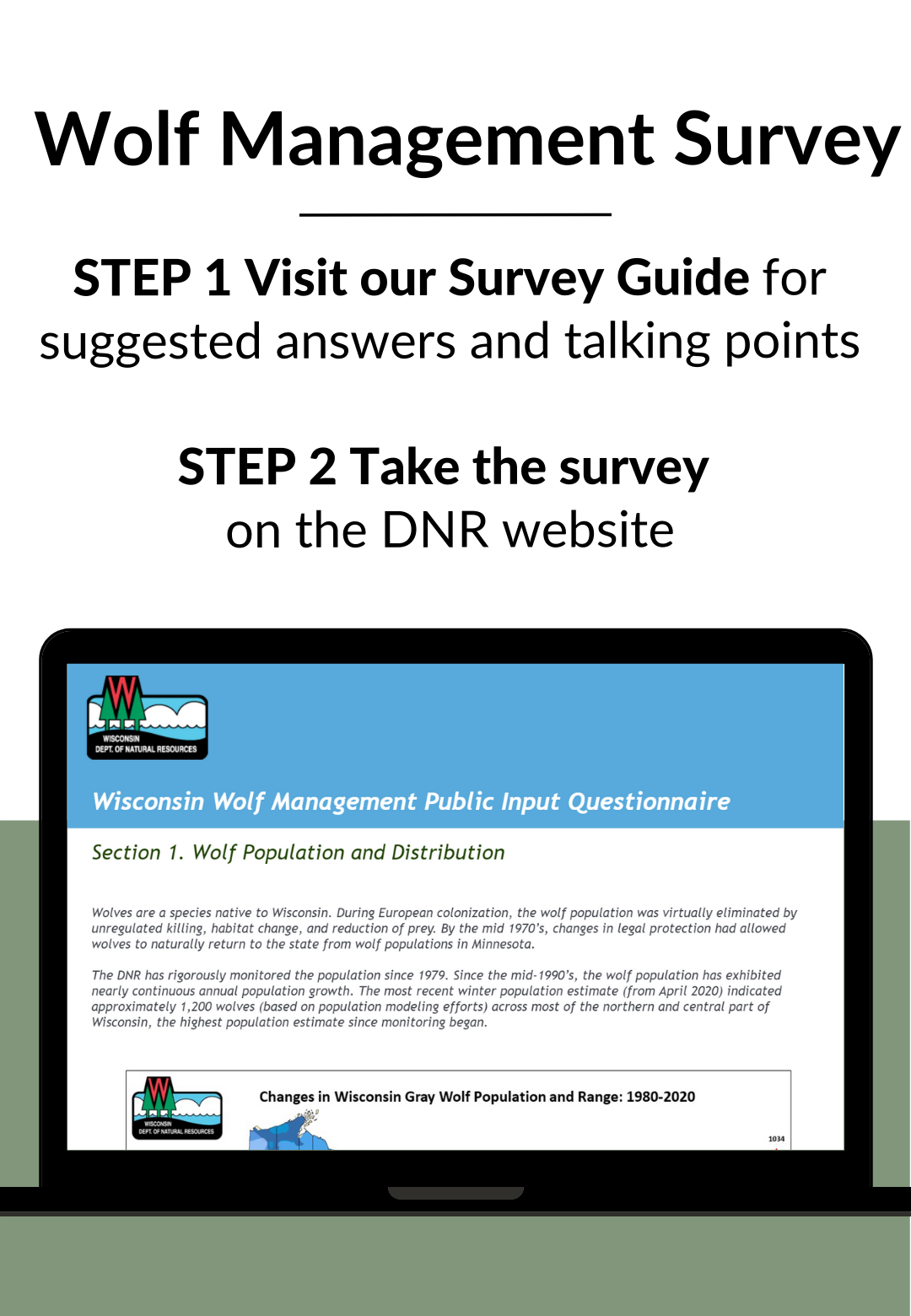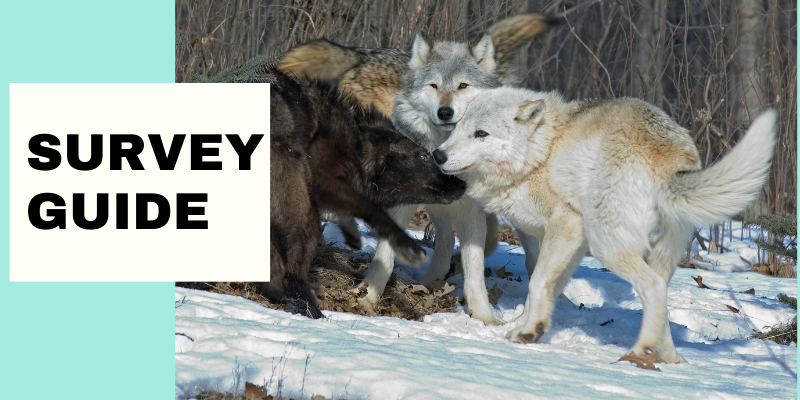
The Wisconsin DNR has opened a one-month public comment period from April 15 to May 15th for citizens to express their views in a survey on the DNR’s plans for a November Wolf Hunt and a wolf management plan update. Please follow the two steps outlined below to help protect our remaining Wisconsin wolves. It's important that Wisconsin's wolf management plan is based on public input, up-to-date science, tribal consultation, and broad stakeholder engagement. This survey will help with the first step, so it's important to let your voice be heard.
Here are the steps to take:
- REFERENCE SURVEY GUIDE: The DNR wolf survey includes a few “tricky” questions that can be confusing. Therefore, we are providing a Survey Guide, which will help you complete the survey in line with your wolf conservation priorities. Please review this Survey Guide prior to completing the DNR survey. There are also some talking points on the last two pages that can be used as a guide for the non-multiple choice questions.
- TAKE THE WOLF SURVEY: Find the survey on the DNR Wolf management plan webpage here, it is CRITICALLY IMPORTANT that you share your viewpoint before the May 15th deadline. It takes about 15 minutes or less to complete.
Wisconsin’s February 2021 wolf hunt earned Wisconsin's DNR a black eye across the state and nationally, for conducting a wolf hunt divorced from science and ethical norms. In less than 3 days, from February 22 – 24th, hunters killed 218 wolves, far exceeding the statewide quota of 119 by 83% or 99 animals. Certain zones, like Zone 2 in Northeast Wisconsin, experienced wolf kills 250% over quota.
How did this occur? Throngs of unlicensed hunters joined the thousands of licensed hunters with their own packs of dogs, snowmobiles, GPS technology, and infrared-sensitive devices. Wolves stood no chance, enduring hours of pursuit and torment. This unprecedented hunt took place during the breeding season, killing pregnant females and alpha males, disrupting family packs at a time-critical to pup survival. The likely result? More than 60% of the wolf packs may not produce pups this year. Equally troubling, no complete understanding of the hunt’s biological toll is possible, as the state declined to inspect carcasses and the excessive numbers of hunters on the landscape “group hunting” have made it even more difficult to estimate the number of wolves illegally killed. It is no wonder a Department of Natural Resources (DNR) staffer called the hunt a “(expletive) abomination.”
Still today, Wisconsin’s DNR lacks the critical biological data needed to assess the impact of the February hunt on Wisconsin’s remaining wolves. Yet, compelled by a misguided law (Act 169) DNR is already looking ahead to another hunt in November, which places our wolf population in jeopardy and forces our DNR to violate its higher public trust obligations to manage our state’s precious wildlife in keeping with sound science and socially acceptable practices. Wisconsin's wolf management plan will set the guidelines for a wolf hunt in 2022 and beyond, making public participation in the process, like filling out the survey critical.
